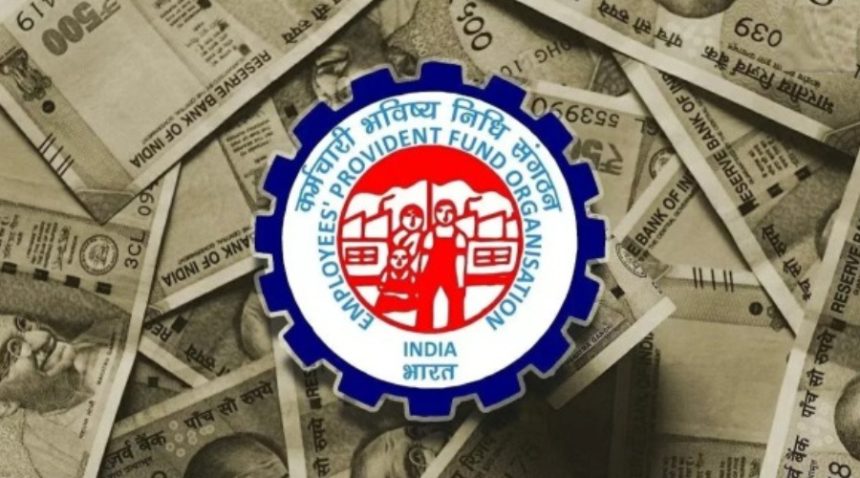Secure, stable, and tax-free – the EPF continues to be a strong pillar in long-term retirement planning
The Employees’ Provident Fund Organisation (EPFO) has kept the interest rate on Employees’ Provident Fund (EPF) deposits unchanged at 8.25% for the financial year 2024–25. This decision was finalized after the EPFO’s Central Board of Trustees meeting held on February 28, 2025, and was later approved by the Ministry of Finance. The unchanged rate directly impacts over 7 crore salaried employees in India who contribute to EPF every month as part of their retirement savings.
A Look at the Past: EPF Interest Rate Over the Years
The interest rate on EPF has not been static. It has gone up and down over the last several years, reflecting economic conditions and returns on government-backed investments. Here’s how it has changed:
2015–16: 8.80%
2016–17: 8.65%
2017–18: 8.55%
2018–19: 8.65%
2019–20: 8.50%
2020–21: 8.50%
2021–22: 8.10% (lowest in over 40 years)
2022–23: 8.15%
2023–24: 8.25%
2024–25: 8.25%
The lowest point came in 2021–22 when the interest rate was cut to 8.10%, the lowest since 1977–78. Since then, the EPFO has slowly increased the rate, returning to 8.25% for two years in a row.
How EPF Compares to Other Safe Investments
EPF is not the only saving option for long-term investments. There are other government-backed and bank savings schemes. Here’s how EPF stacks up:
Public Provident Fund (PPF): 7.1% interest
National Savings Certificate (NSC): 7.7% interest
Senior Citizens’ Savings Scheme (SCSS): 8.2% interest
Bank Fixed Deposits: 6.5% to 7.5% interest, depending on the bank and tenure
EPF offers a higher interest rate than many of these options. Another major benefit is that EPF interest is tax-free, provided the account is held for five continuous years or more.
What This Means for EPF Account Holders
Keeping the interest rate at 8.25% brings both good news and some concerns for EPF account holders.
Good news:
The interest rate remains high compared to other fixed-income investments.
EPF is backed by the government, making it a safe and reliable investment.
Interest earned on EPF is tax-free, which adds to the effective return.
For example, a person with ₹5,00,000 in their EPF account will earn ₹41,250 as interest in the year 2024–25.
Concerns:
Many members are still waiting for their interest for the previous year to be credited to their accounts. This delay is not unusual and typically gets resolved by backdating the credited interest to the start of the financial year.
With inflation and rising costs of living, some believe that 8.25% is not enough to beat long-term inflation.
A Matter of Perspective: Stable Returns or Missed Chances?
Stability: EPF offers a stable and predictable return. This is important for long-term financial planning, especially for retirement. Because the fund is managed by the government and earns through secure instruments like government bonds, it is a low-risk investment. In times of market uncertainty or economic slowdown, such stability becomes even more valuable.
Missed Opportunity: On the other hand, some experts feel that sticking to EPF alone might mean missing out on higher returns that are possible through market-linked options like mutual funds, equity shares, or even the National Pension System (NPS). While these carry more risk, they also have the potential for higher growth, especially over the long term.
Young investors with a longer time horizon before retirement might consider adding some higher-risk, higher-return options to their investment plans, instead of relying only on EPF. A balanced mix of safe and growth-oriented investments could help build a stronger retirement fund.
Why the Rate Was Not Increased Further
There were expectations in some sections that EPFO might raise the interest rate beyond 8.25% due to higher income from its investments in bonds and other instruments. However, keeping the rate the same could indicate a cautious approach by the government and EPFO.
They may be aiming to:
Maintain the long-term financial health of the fund
Avoid any budgetary strain or overcommitment of returns
Keep the system stable and sustainable for future generations
It also reflects a balance between safety and returns, trying to give a decent rate without taking too much risk.
Final Thoughts
The decision to keep the EPF interest rate at 8.25% for FY 2024–25 can be seen as a move toward financial stability and security for millions of salaried employees. While some may see it as a missed opportunity to offer higher returns, others will appreciate the consistency and safety of EPF savings, especially when other markets are unpredictable.
For anyone planning for retirement, it is wise to look beyond just one option. EPF can be the foundation of retirement planning, but it may need to be supported by other investments, depending on individual goals and risk tolerance. In the end, a well-diversified approach often delivers the best results.





